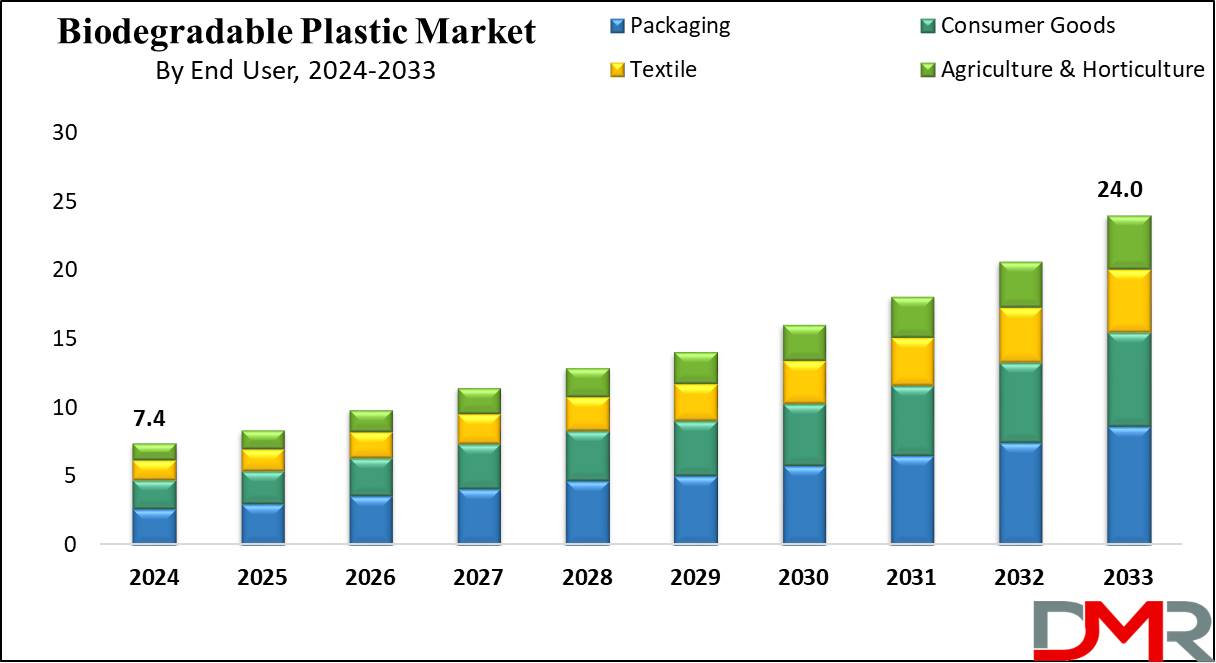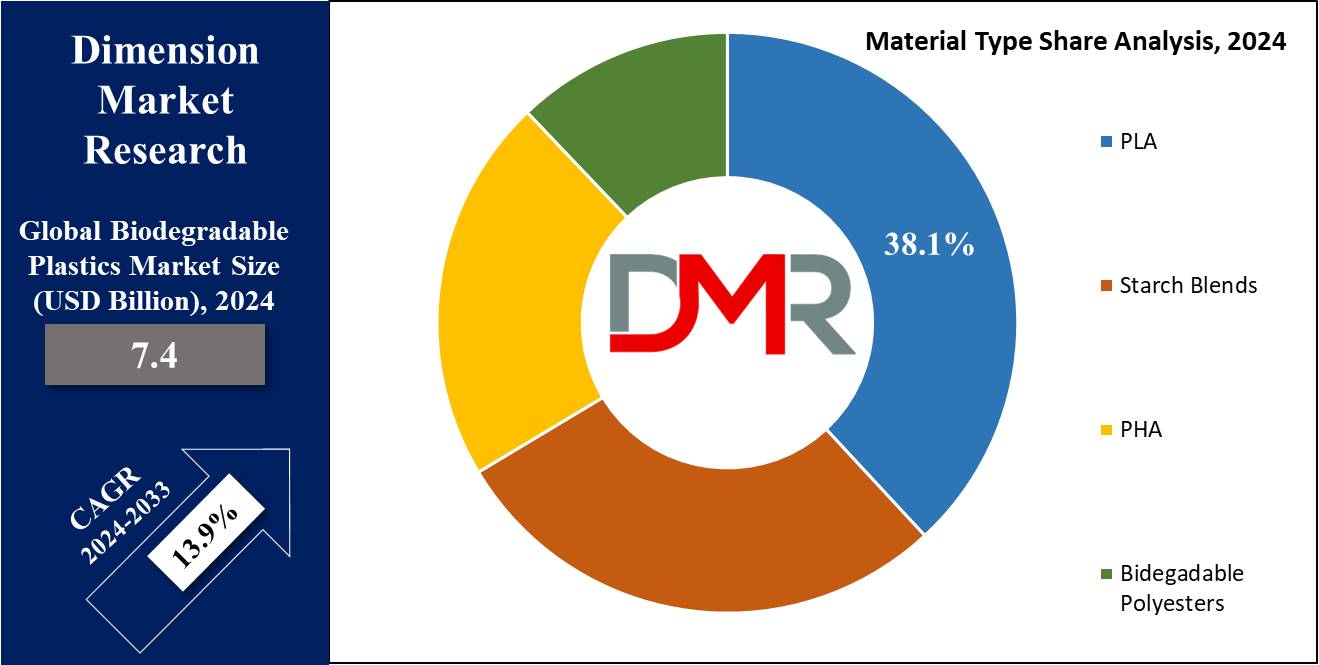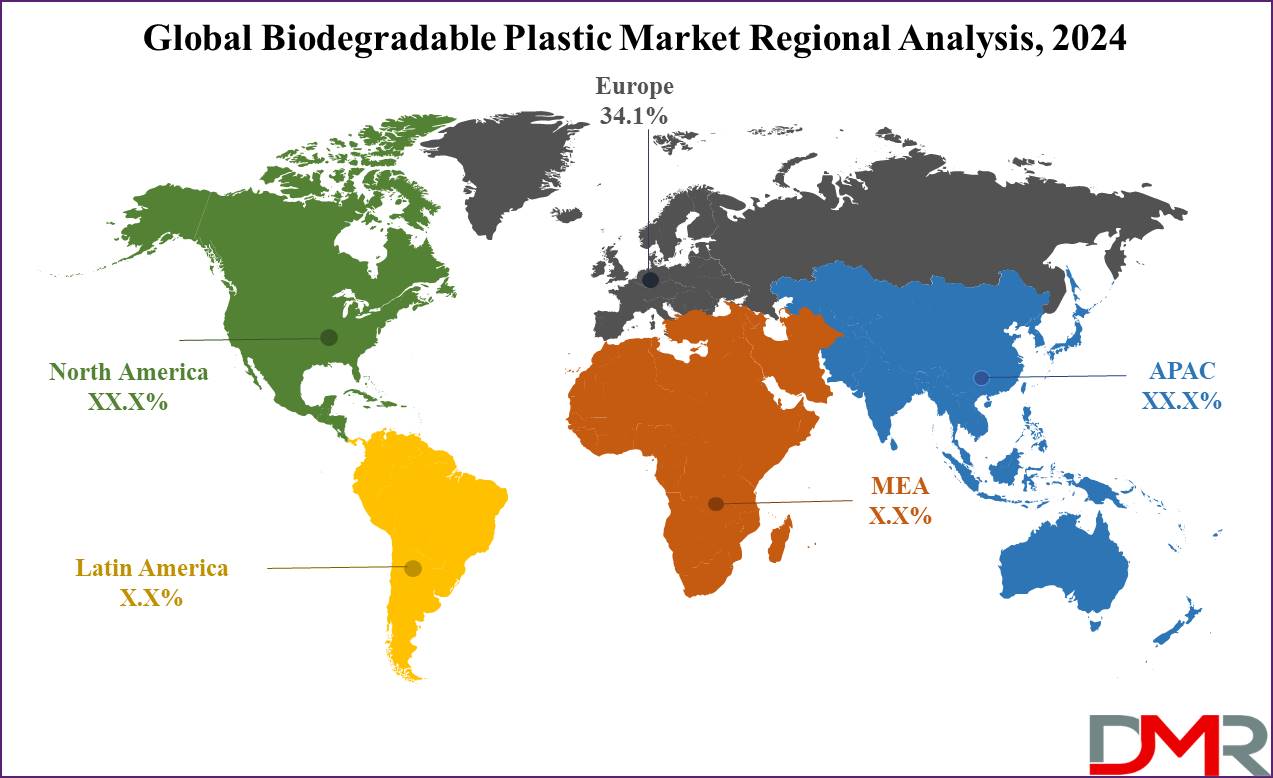Market Overview
The Global Biodegradable Plastic Market is expected to hit a market value of USD 7.4 billion in 2024 and further is looking forward to reaching USD 24.0 billion in 2033 with a CAGR of 13.9%.
Plant-derived plastics also refer to the involved either beneficial for the environment (e.g., renewable resources) or modified to decay mechanically by organic means into simpler substances such as water, carbon dioxide, and biomass. These are organohalogen compounds developed for being able to degrade into non-toxic and insignificant matter by the relevant environmental conditions such as heat, moisture, or microbial activity.

In contrast with conventional plastics, biodegradable plastics offer an eco-friendly and sustainable approach that can prevent plastic pollution as well as environmental degradation. They come across different segments such as packaging, agriculture, textiles, and medical devices that support the transformation of the present systems that prevail into a circular and greener economy.
Key Takeaways
- Polylactic acid is expected to dominate this segment based on material type in the global biodegradable plastic market with 38.1% of market share in 2024.
- Packaging is projected to dominate this market in the end-user segment with 36.0% of the market share in 2024.
- The Global Biodegradable Plastics Market size is estimated to have a value of USD 7.4 billion in 2024 and is expected to reach USD 24.0 billion by the end of 2033.
- Europe has the largest market share for the Global Biodegradable Plastics Market with a share of about 34.1% in 2024.
- The market is growing at a CAGR of 13.9 percent over the forecasted period.
Use Cases
- Food packaging: Biodegradable plastics are used to create packaging materials for food products, lowering environmental effects in comparison to standard plastics.
- Single-use items: Biodegradable plastics are used for items like straws, cups, and cutlery, presenting a sustainable alternative to standard unmarried-use plastics.
- Agricultural applications: Biodegradable plastics are used in agriculture for mulch films, seedling trays, and crop covers, contributing to soil health and decreasing plastic waste.
- Textiles: Biodegradable plastics may be included in textiles for packages like clothing, shoes, and add-ons, presenting eco-friendly options to artificial fibers.
- Medical devices: Biodegradable plastics are employed in medical devices consisting of sutures, implants, and drug delivery systems, providing biocompatible & environmentally friendly options. These applications are closely aligned with medical plastics extrusion, which plays a pivotal role in manufacturing specialized biodegradable components in the healthcare sector.
Market Dynamic
The biodegradable plastics market is hastened by three main things which are the growing environmental concerns, the imposition of strict regulations towards conventional plastics, and the increased customer demands for the sustainable alternatives. Rising concern over plastics pollution and ecological sustainability has markedly spurred the growth of the market for biodegradable plastics across many industries including packaging and consumer hardware.
Technological improvements and improvements in biodegradable substances, at the side of authorities’ initiatives promoting sustainable practices, in addition, propel marketplace growth. However, demanding situations which include high manufacturing costs, constrained scalability, and the need for stepped forward performance characteristics remain constant. Despite those demanding situations, the marketplace continues to extend globally as corporations try to fulfill the evolving demands for environmentally accountable solutions. This is particularly relevant for sectors such as
blow molded plastics, where manufacturers are integrating biodegradable materials to reduce environmental footprints without compromising on performance.
Research Scope and Analysis
By Material Type
Polylactic acid is expected to dominate this segment based on material type in the global biodegradable plastic market
with 38.1% of market share in 2024.

Polylactic Acid (PLA) dominates the biodegradable plastics market with the aid of the use of fabric type for numerous reasons. First, PLA is derived from renewable resources in conjunction with corn starch or sugarcane, making it an environmentally pleasant opportunity compared to standard petroleum-based totally plastics. This aligns with the developing consumer demand for sustainable and eco-friendly products.
PLA gives versatility in applications, in conjunction with packaging, textiles, client items, and biomedical devices. Its capacity to be processed into various forms, including films, fibers, and rigid bins, makes it suitable for a huge variety of end uses. PLA has well-known suitable mechanical properties, such as stiffness and transparency, comparable to traditional plastics, enhancing its suitability for
biodegradable packaging solutions.
By End User
It is predicted that the packaging segment will make up for most of the global share of biodegradable plastic
with 36.0% in 2024. The application of different packaging in the biodegradable plastics market is outstanding among all sectors. Such cases are observed especially due to the rise in the demand for environment-oriented packaging options coupled with the fast-rising resource and regulatory concerns to limit post-consumer plastic waste. Biodegradable plastics present a greener alternative to conventional plastics in packaging products and this category includes disposable packaging such as disposable cutlery, bags, and bins.
Organizations in different industries such as food and beverages, cosmetics, and healthcare have recently started to use biodegradable packaging options that are necessary to meet consumer demand for eco-friendly products. Moreover, improvements in biodegradable plastics generation, which includes advanced barrier residences and durability, are similarly fueling the adoption of biodegradable packaging solutions, solidifying its dominance within the market.
The Biodegradable Plastics Market Report is segmented on the basis of the following
By Material Type
- PLA
- Starch Blends
- PHA
- Biodegradable Polyesters
By End User
- Packaging
- Consumer Goods
- Textile
- Agriculture & Horticulture
Regional Analysis
Europe is projected to dominate the global biodegradable plastic market with
34.1% of market share in 2024. Europe dominates the biodegradable plastics marketplace because of numerous elements. The vicinity has stringent rules promoting sustainable practices and reducing plastic waste, fostering a favorable environment for biodegradable plastics adoption. Additionally, there is robust consumer consciousness and a need for eco-friendly products, using marketplace growth.

European organizations like Novamont, BASF, and Corbion are pioneers in biodegradable plastics technology, making an investment closely in research and development that is driving the growth of this market. Moreover, supportive authorities' regulations, offers, and initiatives inspire innovation and marketplace growth. Europe's properly well-developed infrastructure for waste control and recycling in addition enhances the adoption of biodegradable plastics. Overall, these elements position Europe as a leader in the worldwide biodegradable plastics market.
By Region
North America
Europe
- Germany
- The U.K.
- France
- Italy
- Russia
- Spain
- Benelux
- Nordic
- Rest of Europe
Asia-Pacific
- China
- Japan
- South Korea
- India
- ANZ
- ASEAN
- Rest of Asia-Pacific
Latin America
- Brazil
- Mexico
- Argentina
- Colombia
- Rest of Latin America
Middle East & Africa
- Saudi Arabia
- UAE
- South Africa
- Israel
- Egypt
- Rest of MEA
Competitive Landscape
The global biodegradable plastics market, which is highly competitive, is where NatureWorks LLC, BASF SE, and Corbion among others are the main players. NatureWorks is famous for its Ingeo products, whereas BASF mainly manufactures Ecoflex polymers. Corbion affords more than a few biodegradable plastics for numerous packages. These organizations awareness of innovation, increasing product portfolios, and strategic partnerships to stay at the front of this market.
Additionally, startups like Novamont and Biome Bioplastics contribute to the aggressive panorama by introducing novel technology and sustainable solutions. With increasing environmental concerns and stringent policies, competition intensifies, which is driving major players to invest in research and development to satisfy evolving market needs and stay competitive.
Some of the prominent players in the Global Biodegradable Plastics Market are
- Amcor Limited
- BASF SE
- BioGreen
- Total Corbion
- Mitsubishi Chemical Corporation
- Biome Bioplastic Limited
- Plantic Technologies
- Toray Industries Inc.
- Novamont S.p.A.
- Bioplastic International
- Other Key Players
Recent Development
- In January 2024, Paques Biomaterials secures €14 million, and plans biodegradable polymer production, leveraging organic waste. Invest-NL among investors. The growing market anticipates increased demand.
- In October 2023, Circulate Capital invested $5M in Algenesis, a plant-based cloth technological company known for its bio-polythene generation, aiming to enlarge product lines and give a boost to the delivery chain.
- In November 2023, Northern Gritstone invested £2 million in Floreon, a bioplastics manufacturer from the University of Sheffield, to amplify the manufacturing of sustainable, plant-based total substances.
- In March 2023, Amazon invested in Genecis, a women-led bioplastics enterprise that uses organic waste to create PHA bioplastics, a part of Amazon's Climate Pledge Fund supporting sustainability.
- In November 2022, Biotic secured €2m seed funding led via numerous traders together with Rockstar to scale production of biodegradable plastic substances derived from ocean-grown biomass.
Report Details
| Report Characteristics |
| Market Size (2024) |
USD 7.4 Bn |
| Forecast Value (2033) |
USD 24.0 Bn |
| CAGR (2023-2032) |
13.9% |
| Historical Data |
2018 – 2023 |
| Forecast Data |
2024 – 2033 |
| Base Year |
2023 |
| Estimate Year |
2024 |
| Report Coverage |
Market Revenue Estimation, Market Dynamics, Competitive Landscape, Growth Factors and etc. |
| Segments Covered |
By Material Type (PLA, Starch Blends, PHA, and Biodegradable Polyesters), By End User (Packaging, Consumer Goods, Textile, and Agriculture & Horticulture) |
| Regional Coverage |
North America – The US and Canada; Europe – Germany, The UK, France, Russia, Spain, Italy, Benelux, Nordic, & Rest of Europe; Asia- Pacific– China, Japan, South Korea, India, ANZ, ASEAN, Rest of APAC; Latin America – Brazil, Mexico, Argentina, Colombia, Rest of Latin America; Middle East & Africa – Saudi Arabia, UAE, South Africa, Turkey, Egypt, Israel, & Rest of MEA |
| Prominent Players |
Amcor Limited, BASF SE, BioGreen, Total Corbion, Mitsubishi Chemical Corporation, Biome Bioplastic Limited, Plantic Technologies, Toray Industries Inc., Novamont S.p.A., Bioplastic International, and Other Key Players |
| Purchase Options |
We have three licenses to opt for: Single User License (Limited to 1 user), Multi-User License (Up to 5 Users), and Corporate Use License (Unlimited User) along with free report customization equivalent to 0 analyst working days, 3 analysts working days and 5 analysts working days respectively. |
Frequently Asked Questions
The Global Biodegradable Plastics Market size is estimated to have a value of USD 7.4 billion in 2024 and is expected to reach USD 24.0 billion by the end of 2033.
Europe has the largest market share for the Global Biodegradable Plastics Market with a share of about 34.1% in 2024.
Some of the major key players in the Global Biodegradable Plastics Market are BASF SE, Total Corbion, Mitsubishi Chemical Corporation, and many others.
The market is growing at a CAGR of 13.9 percent over the forecasted period.